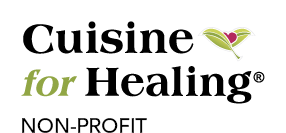I love all things basil!!
It smells amazing, it tastes great and it is full of healing properties straight from Mother Earth’s medicine cabinet.
Here is what Dr. Axe has to say about basil:
Basil is called by many names like sweet basil or even Thai basil, but all of its common names refer to the herb’s botanical name, Ocimum basilicum. Basil is a member of the large mint family, or Lamiaceae family, along with other culinary herbs like rosemary, sage, and even lavender. It is believed that basil has origins in India, but the herb has been cultivated for over 5,000 with its reach spreading to all corners of the globe. There are some indications that basil may have originated even farther east than India with ancient records from 807 A.D. suggesting that sweet basil was used in the Hunan region of China at that time. Basil eventually migrated westward as whole plants as it could be grown easily indoors and away from exposure to cold climates and frost.
Did you know there are actually 35 different types of basil? Basil plants come in a range of variety and sizes, but holy basil is the most researched type of basil thus far. Holy basil is the species of basil most known for its powerful healing qualities. To date, at least six different essential oils have been identified in holy basil within its seeds, roots, leaves and stem. Holy basil, which has the scientific name Ocimum sanctum L. or Ocimum tenuiflorum L., is known to be an anti-inflammatory, anti-bacterial and powerful adaptogen — meaning it helps the body to respond to stress and fight disease.
Scientific studies show the following benefits of basil: (2)
- Anti-inflammatory
- Antioxidant
- Cancer-fighter
- Pain-reducer (analgesic)
- Fever-reducer (antipyretic)
- Diabetes-preventer
- Liver-protector (hepatoprotective)
- Blood vessel-protector
- Anti-stress solution
- Immune-booster
Basil contains antioxidant-rich volatile essential oils, which are considered hydrophobic. This means they don’t dissolve in water and are light and small enough to travel through the air and the pores within our skin. Basil’s volatile essential oils are what give the herb its distinct smell and taste, but they’re also responsible for the healing benefits of basil.
Herbs like basil contain essential oil compounds because these help the plant defend itself from predators like bugs, rodents and strains of bacteria in the soil. When we ingest these protective oils, we experience similar benefits: a boost in immunity and protection from disease.
The most common cooking basil used as a fresh herb in recipes is Italian basil, which also boasts numerous health benefits because of it’s high levels of antioxidants, magnesium and vitamins. Basil extract is also used to create perfumes, household cleaners and in dental-care products since one of the known benefits of basil is its ability to act as an anti-bacterial and anti-microbial agent that fights germs and bacteria.
Homework for the week- eat some basil!
Happy Healthy Eating Dana
https://draxe.com/benefits-of-basil/
https://www.thespruce.com/the-history-of-basil-1807566









